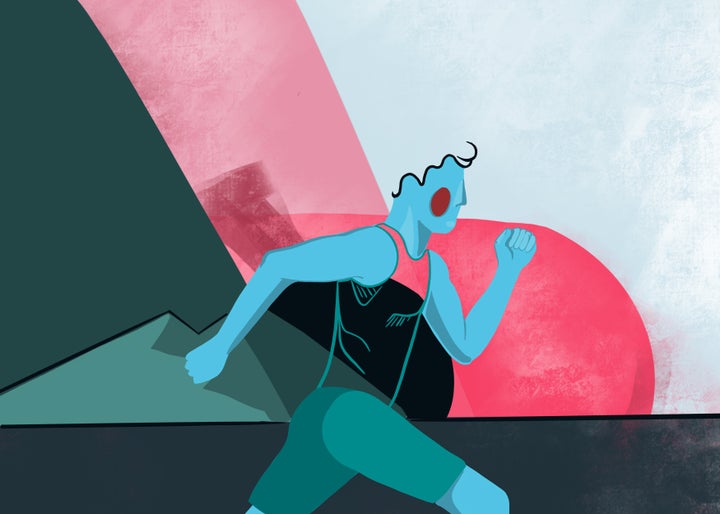If you throw yourself into vigorous exercise – when you usually barely get off the sofa – you could be doing a lot more harm than good. A new study suggests extreme endurance exercise can be dangerous for those who aren’t used to it.
People who suddenly embark on triathlons and marathons with very low fitness levels could raise their risk of sudden cardiac arrest, atrial fibrillation (a heart rhythm disorder) or heart attacks, according to a statement published by the American Heart Association in the journal Circulation.
So yes, starting your training for the London Marathon last minute is a bad idea. Beginners should ideally be giving themselves up to four months to train, with three to four runs per week.
While there’s no question that moderate to vigorous physical activity is great for your overall health, it’s possible to “underdose and overdose” on exercise, said Barry Franklin, a professor of internal medicine at Oakland University.
“More people are running marathons, participating in triathlons and doing high-intensity interval training,” he said. “The purpose of this statement is to put the benefits and risks of these vigorous exercise programmes in perspective.”

What did the study find?
The review of more than 300 scientific studies revealed the potential risks of intense exercise training. One small study concluded that the risk of sudden cardiac death or heart attack is low among people participating in high-intensity exercise, such as marathons and triathlons.
However, over time, the risk of heart attack or sudden cardiac death among male marathon participants has risen, the review found, suggesting these events are attracting higher-risk participants – for example, those who may have an underlying or undiagnosed cardiovascular condition. For women, who made up only 15% of the study population, the occurrence of sudden cardiac death was three-fold less than in men.
Among participants in triathlons, almost 40% of cardiac events occurred in first-time participants, indicating that inadequate training or underlying heart problems may be to blame.
Half of cardiac events occurred in the last mile of a marathon or half-marathon, the review found, leading researchers to advise people to maintain a steady pace rather than sprinting. The warning comes two years after the death of Masterchef semi-finalist Matt Campbell, 29, who tragically collapsed at the 22.5 mile mark during the London Marathon (a 26.2 mile race). The chef had completed another marathon just days before.
The risk of cardiac events is greater at high altitudes, researchers found, but can be decreased by spending at least one day acclimatising to it before doing any strenuous activity. And the risk of atrial fibrillation (AF), a condition that raises the risk of stroke, is reduced with moderate exercise volumes. People who don’t move much have a high risk of AF, while the risk in those doing high volumes of exercise training (such as running 60-80 miles a week) is almost as high.
How to not overdo it
Want to become more active? Start with a light programme, building up slowly to a moderate-to-vigorous exercise routine. See a professional if you have chest pain, chest pressure or severe shortness of breath while exercising. Those with a known heart disease – such as a previous heart attack, bypass surgery or angioplasty – should get a doctor’s approval before starting a new exercise routine.
You should warm up before exercise by doing the planned activity at a slower pace to let your heart rate rise gradually. And then increase the intensity over a set period of time. You could, for example, walk on a level surface for 6-8 weeks, progressing to walking up hills, jogging and running, as long as no symptoms occur such as shortness of breath or chest pain.
The American Heart Association advises people to increase the amount of time spent on exercise incrementally. Start with five to 10 minutes at the beginning and build up slowly to the desired time – apps like Couch to 5K can ease you into this.
Lower the intensity of your exercise when environmental conditions could place a strain on the heart, such as high humidity or high altitude. And cool down after exercise by walking at a slow pace to let your heart rate return to normal.
If you experience any heart-related symptoms such as lightheadedness, shortness of breath, or chest pain or pressure, make sure you stop and seek professional help.
